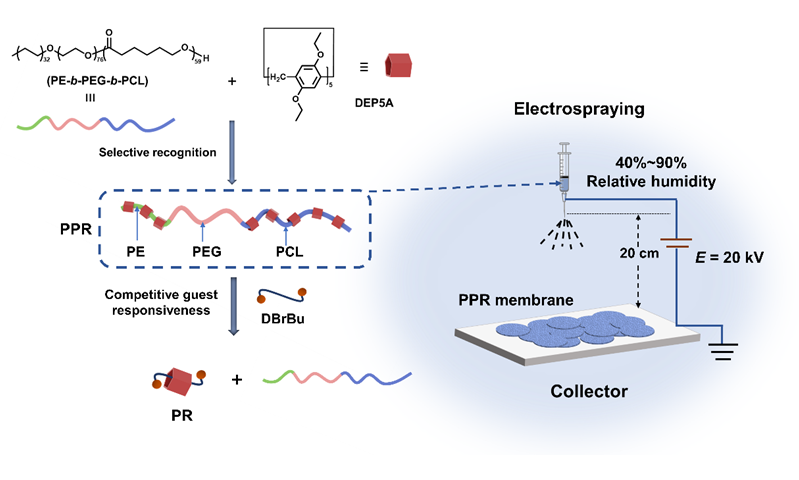| [1] |
Zhang Y. M.; Liu Y. H.; Liu Y. Adv. Mater. 2020, 32, 1806158.
|
| [2] |
Zeng C. Y.; Hu P.; Wang B. Q.; Fang W. Y.; Zhao K. Q.; Donnio B. Acta Chim. Sinica 2023, 81, 469 (in Chinese).
|
|
(曾崇洋, 胡平, 汪必琴, 方文彦, 赵可清, Donnio Bertrand, 化学学报, 2023, 81, 469.)
doi: 10.6023/A23010006
|
| [3] |
Zhang Z.; Lu S.; Cai R.; Tan W. Nano Today 2021, 38, 101202.
|
| [4] |
Tao X.; Liao M.; Wu F.; Jiang Y.; Sun J.; Shi S. Chem. Eng. J. 2022, 443, 136442.
|
| [5] |
Shin H.; Thanakkasaranee S.; Kambiz S.; Seo J. Food Packaging Shelf 2023, 40, 101188.
|
| [6] |
Fu B.; Liu Q.; Liu M.; Chen X.; Lin H.; Zheng Z.; Zhu J.; Dai C.; Dong X.; Yang D. Chinese Chem. Lett. 2022, 33, 4577.
|
| [7] |
Arunachalam M.; Gibson H. W. Prog. Polym. Sci. 2014, 39, 1043.
|
| [8] |
Su S.; Shi J. B.; Dong Y. B.; Hu X. Y.; Wang L. Y. Prog. Chem. 2014, 26, 1409 (in Chinese).
|
|
(孙书, 石建兵, 董宇平, 胡晓玉, 王乐勇, 化学进展, 2014, 26, 1409.)
doi: 10.7536/PC140331
|
| [9] |
Zhang M.; Yan X.; Huang F.; Niu Z.; Gibson H. Acc. Chem. Res. 2014, 47, 1995.
|
| [10] |
Feng W.; Zhou W.; Dai Z.; Yasin A.; Yang H. J. Mater. Chem. B 2016, 4, 1924.
doi: 10.1039/c5tb02737c
pmid: 32263069
|
| [11] |
Wang Z. Q.; Wang X.; Yang Y. W. Adv. Mater. 2023, 36, 2301721.
|
| [12] |
Li J.; Wang H.; Liu B.; Chen J.; Gu J.; Lin S. Adv. Funct. Mater. 2022, 32, 2201851.
|
| [13] |
Tang X.; Tang X. Z.; You Y. C.; Ren L. K.; Wang Y.; Yan L. J. Acta Chim. Sinica 2012, 70, 1565 (in Chinese).
|
|
(唐翔, 唐先忠, 游英才, 任立轲, 王洋, 严立京, 化学学报, 2012, 70, 1565.)
doi: 10.6023/A12030006
|
| [14] |
Cragg P. J.; Sharma K. Chem. Soc. Rev. 2012, 41, 597.
|
| [15] |
Wang Y.; Ping G.; Li C. Chem. Commun. 2016, 52, 9858.
|
| [16] |
Wu R. J.; Wu G.; Yang Y. W. Acc. Chem. Res. 2022, 55, 3191.
|
| [17] |
Li Q.; Zhu H.; Huang F. Trends Chem. 2020, 9, 850.
|
| [18] |
Ahmed E.; Womble C. T.; Weck M. Macromolecules 2020, 53, 9018.
|
| [19] |
Abetz V. Polymers 2020, 12, 794.
|
| [20] |
Huang J.; Tian Y.; Chen L.; Liao Y.; Miao T.; You X.; Wang R. Environ. Sci. Technol. 2020, 54, 7611.
|
| [21] |
Zhang A.; Bai H.; Li L. Chem. Rev. 2015, 115, 9801.
|
| [22] |
Li J.; Dong J.; Cui K.; Wang H.; Sun Y.; Yao Y.; Chen J.; Gu J.; Lin S. J. Mater. Chem. A 2020, 8, 10917.
|
| [23] |
Li J.; Dong J.; Wang H.; Yang X.; Chen J.; Gu J.; Lin S. Adv. Mater. Interfaces 2021, 8, 2101627.
|
| [24] |
Chen J.; Li N.; Gao Y.; Sun F.; He J.; Li Y. Soft Matter 2015, 11, 7835.
|
| [25] |
Liu K.; Yao X.; Jiang L. Chem. Soc. Rev. 2010, 39, 3240.
|
| [26] |
Dong J. H.; Li J. J.; Wang H.; Liu B. X.; Peng B.; Chen J. Z.; Lin S. L. Acta Chim. Sinica 2021, 79, 803 (in Chinese).
|
|
(董锦辉, 李进杰, 王赫, 刘彬秀, 彭博, 陈健壮, 林绍梁, 化学学报, 2021, 79, 803.)
doi: 10.6023/A21030105
|
 ), 林绍梁*(
), 林绍梁*( )
)
 ), Shaoliang Lin*(
), Shaoliang Lin*( )
)
